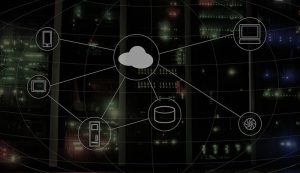Last month, Salesforce launched Revenue Lifecycle Management (RLM), a full overhaul of features and tighter integration of its various current products serving their customers’ Revenue Operations and Management needs (including CPQ, CLM, Revenue Cloud, and Subscription Management).
RLM has been built on and benefits from Salesforce’s native platform capabilities (such as Genie AI, enhanced workflow automations, intuitive code-free configuration, cross-cloud data sharing, etc.) and the use of the standard Object model. Intending to be an extensible enterprise-grade platform, Salesforce RLM also leans heavily into the use of APIs (business, metadata, tooling, etc.) and composable architecture, and positions itself as an exciting approach and solution for current and potential Salesforce RevOps customers.
There are a lot of questions, however, within the existing (and future) Salesforce partner and customer ecosystem about how this new product fits in or makes sense with their broader RevOps landscape, current or proposed investments into processes, people and technology, and overall business strategic objectives and challenges.
Through this FAQ series, we’ll offer an unbiased explanation for these questions and provide background knowledge and expertise to inform your considerations of RLM.
FAQ #5: Can I pick and choose RLM features?
Can I parse out Salesforce RLM capabilities or product features to integrate, augment, or improve my current Revenue Operations tools or capabilities?
The previous question presented the suite of Salesforce RLM products and features as an “a-la-carte” menu, and indeed this is how the product is being introduced (albeit with strong dependencies between these modules to deliver maximum results or even stated functionality). While this is a viable option, to deliver the most benefit one must research and analyze not only Salesforce RLM’s platform capabilities as a comprehensive collection of products, but also look at your existing tools and processes in terms of how well they function today, and whether it is time to consider migrating them into the full RLM enterprise suite. Salesforce’s position on this is:
“Most businesses are looking at the product-to-cash lifecycle as a series of steps, rather than a unified journey. In a world where businesses need to be agile, adapting to new ways of buying, new expectations, and new revenue models, this connected journey is critical.”
That’s not to say businesses have been ignorant of the need to unify RLM, it’s more acknowledging the known lack of tools and platforms (and associated effort to rebuild existing human work and dataflows) to do so.
One area where this question poses significant exploration is where you have invested in some Salesforce RLM components already. It may make sense to look at bringing these specific components into a full-scale RLM implementation, and then use these established tools as a foundation to expand into components and features that are now available to you. This acts as an accelerating factor in your adoption and migration path.
There’s another perspective worth considering: what if your current RevOps stack consists of applications that are not based on, or even connected to Salesforce? Is now the time to look at bringing all these disparate tools together and review their functionality to see if they are covered by RLM? It may well be, especially if they are creating a disjointed experience or creating gaps in your revenue insights and management capabilities.
While these are all ruminations on how to break apart RLM into parts that are most valuable to you, two crucial factors cannot be ignored:
1. RLM cannot be parsed out and sold as “individual parts”—period. The next section of this paper talks a bit about licensing and implementation considerations of Salesforce RLM and you will see that, whether you need or implement them, RLM is a suite that is offered in “everything included” guise only. This selling model makes sense, since its value lies in its overall connectedness as a full suite, not as pieces of it. There may be some who bristle at this but given the investment and trajectory Salesforce has established in the enterprise RevOps space with RLM, I believe it makes sense. This also means…
2. If you decide to purchase “parts” of RLM (i.e., CPQ, Billing, etc.), you will not be buying into Salesforce RLM, but rather its founding applications that do not have the extensibility, UX, flexibility, or feature set that has evolved into RLM to deliver, and that are on a sunset path (albeit one that will be supported likely into the next decade).
These two factors above may be enough to set the course for your RLM journey. No matter where you land or what your timeline for transformation is, remember that the evolution of revenue management best practices, and how these are expected to support and deliver to the needs of your customers, functional user groups, go-to-market partners, and channels, connected interdependent technologies, and the goals of your leaders and shareholders, is never-ending; at some point, you will have to evolve to keep up. Plan accordingly.
Our final FAQ article comes out next week, covering perhaps the biggest RLM question out there: What is a realistic budget and timeline to consider for an RLM implementation or migration?
Until then, best of luck in your revenue operations!






















































0 Comments